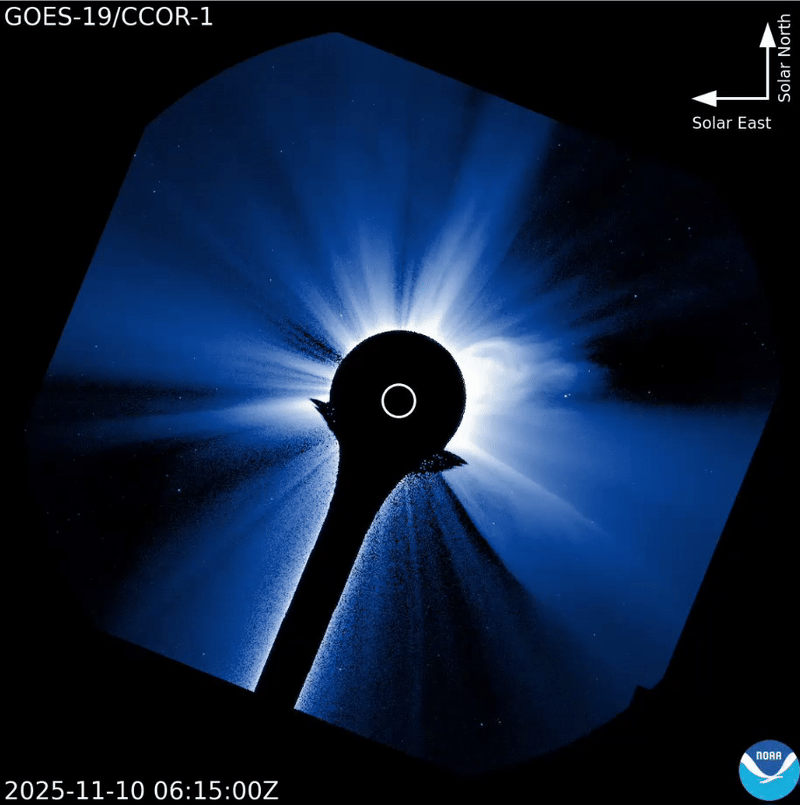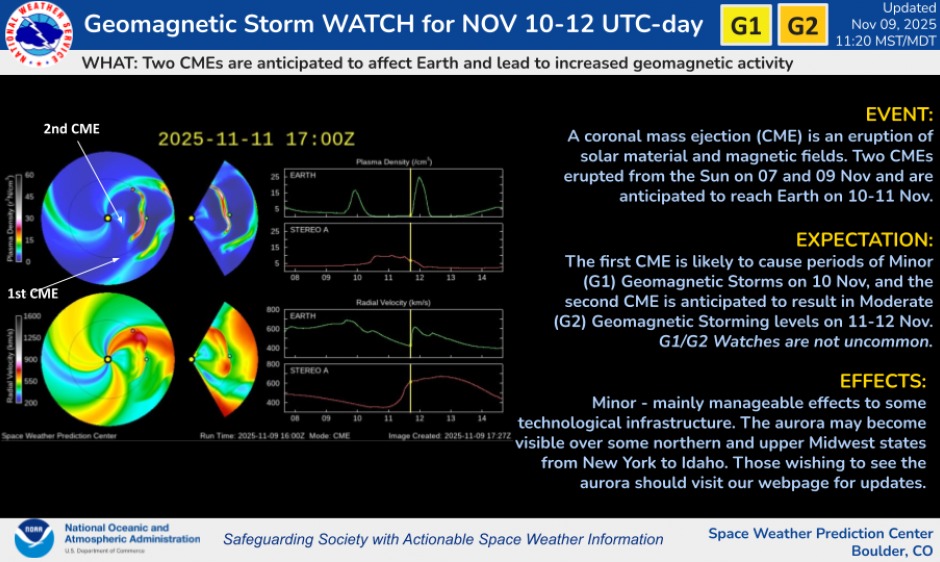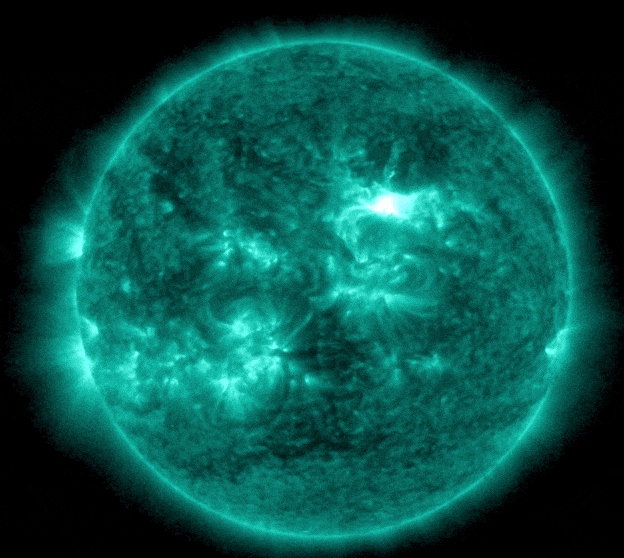Aurora alert! Sun fires off 2 colossal X flares as multiple CMEs race toward Earth
Geomagnetic storm conditions are possible Nov. 10 through Nov. 12.

Editor's note: The sun unleashed a third X-class solar flare on Nov. 11. Clocking in at X5.1, it is the biggest solar flare this year and could impact Earth on Nov. 12. Northern lights could be visible in 21 U.S. states tonight! Keep your eyes on the skies aurora chasers!
Solar activity has kicked into high gear already this week with two powerful X-class solar flares erupting from active region AR4274 — one on Nov. 9 and another early Nov. 10 — each potentially firing coronal mass ejections (CMEs) toward Earth.
The Nov. 9 eruption, an X1.7 flare that peaked around 2:30 a.m. EST (0730 GMT) produced a strong (R3) radio blackout and an Earth-directed CME expected to impact around Nov. 11-12. The CME is following close behind an earlier eruption from Nov. 7, which may graze Earth today (Nov. 10).
Together, the events have prompted NOAA to issue a G1 (minor) geomagnetic storm watch for Nov. 10 and a G2 (moderate) watch for Nov. 11-12. These levels can impact satellites and power systems and can help boost auroras across northern U.S. states from New York to Idaho, as well as parts of northern Europe.
But that's not all! Space weather forecasters and aurora chasers are keeping a close watch on the aftermath of a second X-flare from the same region just this morning (Nov. 10), which unleashed another CME toward Earth. The flare measured as an X1.2 eruption, peaking around 4:20 a.m. EST (0920 GMT).
HUGE symmetrical full-halo CME from the X1.2 flare in AR 4274! This one is headed directly at us. This is a big one! Chances for major geomagnetic storms this week are rising rapidly! https://t.co/VPQNvzoTeU pic.twitter.com/aYsGk5Wpn2November 10, 2025
What's next?
At least two CMEs are en route to Earth, one from Nov. 7, which could brush past today, and another from the Nov. 9 X1.7 flare, expected to arrive around Nov. 11-12.
A third, potentially larger CME linked to this morning's Nov. 10 X1.2 flare is now under analysis. Space weather forecasters are reviewing new coronograph imagery from NASA's SOHO and STEREO spacecraft to determine its speed and trajectory. As such, forecasts and geomagnetic storm alerts may be updated accordingly.
Breaking space news, the latest updates on rocket launches, skywatching events and more!
Early modelling suggests the CME will impact Earth on Nov. 12.
Here we go! NASA M2M WSA-ENLIL+Cone model for the full-halo CME from the X1.2 flare today indicates direct impact on Nov 12th, 3-4h UTC (+/-7h). G2-G3 storm conditions possible. https://t.co/p5nr5Jz8cH pic.twitter.com/0osQN5c4HcNovember 10, 2025
What's an X-flare?
A solar flare is a sudden, intense burst of energy from the sun caused by the sudden release of magnetic energy in an active sunspot region. These outbursts send radiation and charged particles hurling into space and can disrupt communications on Earth if the flare erupts from an Earth-facing sunspot.
X-class solar flares are the most powerful category of flares. The number that follows the X indicates its strength, with each step representing a coupling in power, meaning an X2 flare is twice as strong as an X1.

Daisy Dobrijevic joined Space.com in February 2022 having previously worked for our sister publication All About Space magazine as a staff writer. Before joining us, Daisy completed an editorial internship with the BBC Sky at Night Magazine and worked at the National Space Centre in Leicester, U.K., where she enjoyed communicating space science to the public. In 2021, Daisy completed a PhD in plant physiology and also holds a Master's in Environmental Science, she is currently based in Nottingham, U.K. Daisy is passionate about all things space, with a penchant for solar activity and space weather. She has a strong interest in astrotourism and loves nothing more than a good northern lights chase!
You must confirm your public display name before commenting
Please logout and then login again, you will then be prompted to enter your display name.



